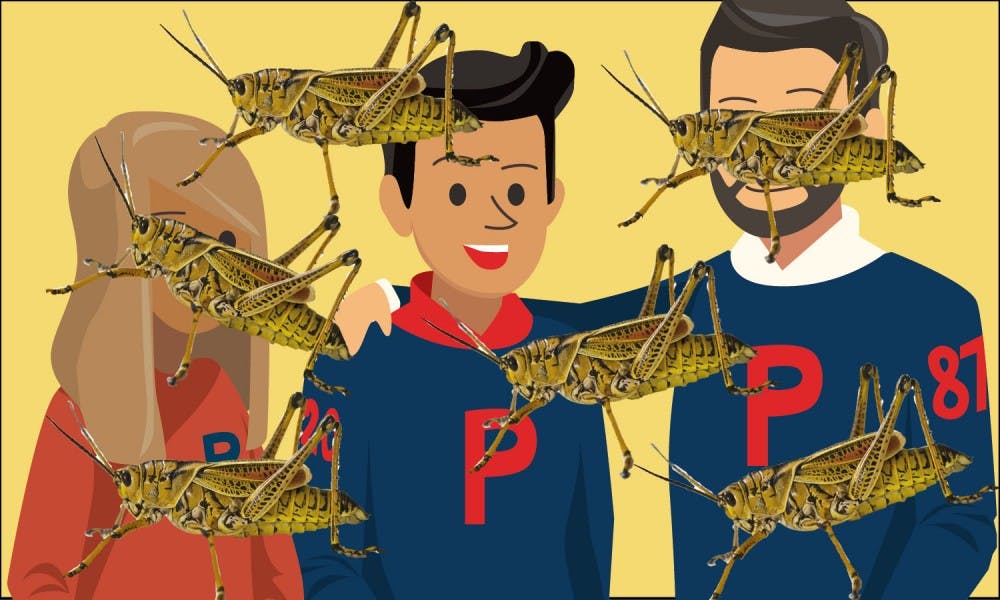Forget Legacies: Locusts Make Up Approximately 1/2 of Penn Undergraduates

Photo by yanivmatza CC0, Camille Rapay (edited)
September 7, 2017 at 5:28 pm
Less than a week after the DP published a piece on legacy admissions, students called attention to another problematic facet of Penn’s student body: locusts, who make up about one-half of all undergraduate students, according to new data released regarding the class of 2021.
Locusts are a type of swarming grasshopper, known for devastating crops and being biblical plagues. So why are they such a significant portion of the Penn population?
"Look, I don't want to generalize, but when five thousand locusts swarm into my econ lecture and start nibbling on any paper in sight, you start to think: did they really deserve to be admitted?" asked college sophomore William Keeton.
Some believe Penn decided to admit a higher percentage of locusts than other peer universities due to the name of Locust Walk. However, the name derives from the Locust tree, not the destructive insect. Penn would be foolish to admit thousands of locusts based exclusively on this false relationship.
However, one thing many Penn students fail to consider is the number of locusts who are not at Penn. "There are billions of Locusts in the world," said an admissions representative. "At Penn we only have the top locusts. The acceptance rate is actually very low."
Supporters of locusts on campus say that because the life span of a typical locust is one year, many generations can come through Penn at a rate much quicker than typical human legacy admissions. "This builds a great sense of community," the admissions rep said. "And the plague vibe really brings people together."